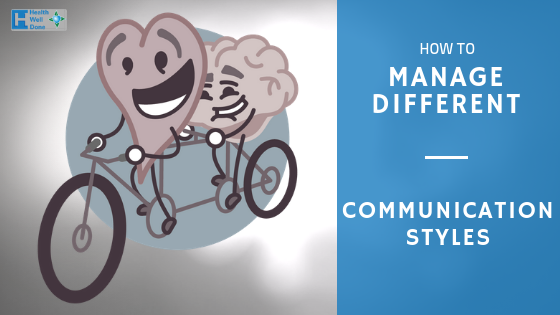Effective communication is the key to creating an empowered team that delivers outstanding projects. Without it, projects become more difficult and protracted than they need to be. But everyone has a different way of communicating. To create a team that works well together, it pays to learn how your colleagues get their ideas across.
An engineer friend of mine has a funny – but accurate – way of describing her and her husband. She calls herself an emotion-based lifeform, while her husband – also an engineer – is a logic-based lifeform. I asked her to tell me about a typical conversation between these two “lifeforms”. Here’s how it usually goes.
Emotion vs. Logic
The emotion-based lifeform expresses her worries about the current project she is working on. It’s been on her mind all week and she just needs to get it off her chest. She can only start to make sense of it once it’s said out loud to another lifeform.
The logic-based lifeform hears: problem, problem, problem. (Imagine the teacher from Peanuts talking here – it’s just noise.)

The logic-based lifeform’s reaction is: *INITIATITE WORLD-SAVING PROBLEM-SOLVING SEQUENCE* OBJECTIVE: TO COLLECT THE MINIMUM AMOUNT OF INFORMATION REQUIRED TO SOLVE THE PROBLEM. STAGE 1: LAUNCH RAPID-FIRE QUESTIONS TO OBTAIN NEEDED INFORMATION; DISCARD ALL EXTRANEOUS DATA.
The emotion-based lifeform does not realize that the problem-solving sequence has started and gets annoyed by the abrupt interrogation. She knows what she needs to do, or at least, she knows she will soon figure it out and she definitely does not have time to explain all the intricacies and nuances of the situation to the logic-based lifeform, who doesn’t deal in nuances anyway. She knows that to him, “shades of gray” is some racy book. The emotion-based lifeform replies defensively to the information gathering attack, slightly shocked by the sudden direct tone. As if she doesn’t have enough problems on her plate!
Communication Breakdown
The logic-based lifeform is oblivious to the response to the information-gathering stage. To him, it isn’t the Spanish Inquisition; obviously, the emotion-based lifeform expects him to put together a logical remedial action plan and will provide all the relevant facts. Unaware of the emotional response he is receiving, he pushes on, digging deeper for answers but not quite getting the facts he needs. Soon he begins to wonder why the emotion-based lifeform asked for help in the first place. He’s not stupid, he can tell when someone clearly doesn’t want his help. But being the stand-up guy that he is, he won’t just stand by and let another lifeform falter.

The emotion-based lifeform continues to respond unsatisfactorily to the information-gathering stage, making the logic-based lifeform increasingly more impatient. If he doesn’t get enough information, how will he progress to Stage 2: Devise Amazingly Awesome Action Plan that Obliterates All Problems? How will he sleep that night, as he turns over and over the half-missing facts, filling in the gaps with all possible scenarios? Does the emotion-based lifeform have no pity at all? A half-fixed problem will drive him insane!
The emotion-based lifeform is like a kettle about to boil by this point. No, she does not know what the average overspend by trade is off the top of her head, especially not while she is now questioning her own abilities. Does the logic-based lifeform have no pity at all? Now the emotion-based lifeform has to have a double-length session with another emotion-based lifeform about her original concerns and this frustrating conversation with the logic-based lifeform. And she won’t be able to sleep until she does know the average overspend by trade and by activity!
Better Communication Rules

Besides cracking me up, I realized while preparing the materials for my Women In Construction: Let’s not skirt the issues program that often, poor communication is the crux of many of our issues. Here are two people, both trying to do the right thing, but the messages are getting hopelessly mixed up.
Here are my top three rules for better communication both in business and in your personal life:
- Be aware of different communication styles people use. This can be verbally through words, vocally through sounds and tone of voice, physically through gestures, and emotionally through feelings. Everyone communicates differently – try to learn your team members’ styles.
- Be as specific as possible at every turn. Don’t assume that everyone knows what you are talking about, be explicit and check that everyone is on the same page.
- Finally, always assume everyone means well. If there are two ways you can take something – a good way and a bad way – always assume the speaker meant the good way, however garbled the message ended up.
I’ll also be taking a deeper dive into these issues between emotion- and logic-based lifeforms on the Women in Construction program, so if you would like some more insights into how to handle situations professionally and how to add value to your company, drop me a line to discuss available dates.






